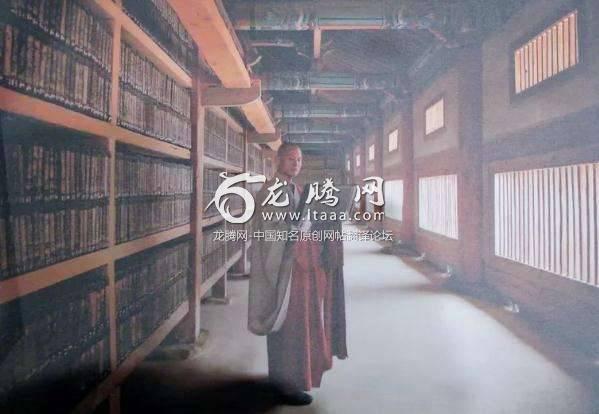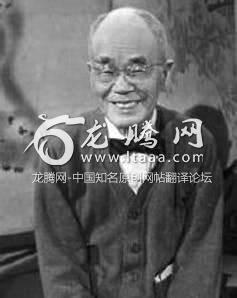为何很多美国人认为佛教只是一种哲学? [美国媒体]
在东亚地区,佛教徒们在二月庆祝佛祖的圆寂及其涅槃。但在北卡罗来纳州我当地的禅宗寺庙里,会在十二月的假日季期间纪念佛祖的涅槃,包含一个给孩子们准备的简短演讲,一个烛光敬拜仪式和庆祝活动后的一顿晚间便餐。
In East Asia, Buddhists celebrate theBuddha’s death and entrance into final enlightenment in February. But at mylocal Zen temple in North Carolina, the Buddha’s enlightenment is commemoratedduring the holiday season of December, with a short talk for the children, acandlelight service and a potluck supper following the celebration.
Welcome to Buddhism, American-style.
在东亚地区,佛教徒们在二月庆祝佛祖的圆寂及其涅槃。但在北卡罗来纳州我当地的禅宗寺庙里,会在十二月的假日季期间纪念佛祖的涅槃,包含一个给孩子们准备的简短演讲,一个烛光敬拜仪式和庆祝活动后的一顿晚间便餐。
欢迎来到美式佛教。
Early influences
早期的影响
Buddhism entered into the American culturalconsciousness in the late 19th century. It was a time when romantic notions ofexotic Oriental mysticism fueled the imaginations of Americanphilosopher-poets, art connoisseurs, and early scholars of world religions.
佛教是在19世纪晚期进入美国文化意识的。那时期,带着异国情调的东方神秘主义浪漫观念,刺激了美国哲人、诗人、艺术鉴赏家以及早期世界宗教学者的想象力。
Transcendental poets like Henry DavidThoreau and Ralph Waldo Emerson read Hindu and Buddhist philosophy deeply, asdid Henry Steel Olcott, who traveled to Sri Lanka in 1880, converted toBuddhism and founded the popular strain of mystical philosophy calledTheosophy.
诸如亨利·戴维·梭罗、拉尔夫·沃尔多·爱默生等超验主义诗人深入研读过印度教/佛教哲学,亨利·斯太尔·奥尔科特也是如此,他于1880年前往斯里兰卡旅行,改信了佛教并创立了广受欢迎的的神秘哲学类型,称为“灵智学”。
(译注:梭罗,美国作家、哲学家,无政府倾向的超验主义代表人物,有《瓦尔登湖》等传世;艾默生,美国思想家、诗人,被称为“美国文明之父”,创立过“超验俱乐部”;奥尔科特(1832 - 1907),本为教区长,灵智学会的创始人及首任主席,首位正式转向佛教信仰的欧美人。)
Meanwhile, connoisseurs of Buddhist artintroduced America to the beauty of the tradition. The art historian andprofessor of philosophy Ernest Fenellosa, as well as his fellow BostonianWilliam Sturgis Bigelow, were among the first Americans to travel to Japan,convert to Buddhism and avidly collect Buddhist art. When they returned home,their collections formed the core of the premiere Arts of Asia collection atthe Museum of Fine Arts, Boston.
这个时期,佛教艺术鉴赏家将传统之美引入了美国。艺术史学家,哲学教授欧内斯特·费诺罗萨以及他的波士顿同伴威廉斯·特吉斯·比奇洛,是第一批赴日本旅行的美国人,他们转信了佛教,热衷于收藏佛教艺术品。回国后,他们的藏品组成了波士顿美术馆首次露面亚洲藏品的核心部分。
At the same time, early scholars of worldreligions such as Paul Carus made Buddhist teachings readily accessible toAmericans. He published “The Gospel of Buddha,” a best-selling collection ofBuddhist parables, a year after attending the World Parliament of Religions inChicago in 1893. This was the first time in modern history that representativesfrom the world’s major religions came together to learn about one another’sspiritual traditions.
与此同时,诸如保罗·卡卢斯的早期世界宗教学者,让美国人能更容易地接受佛教教义。在他于1893年在芝加哥参加世界宗教议会一年后,出版了《佛祖的福音》,是最畅销的佛教寓言集。这是现代历史上,世界主要宗教的代表们第一次聚到一起了解各自的精神传统。
The Buddhist delegation in Chicago includedthe Japanese Zen master Shaku Sōen and the Sri Lankan Buddhist reformerAnagārika Dharmapāla, who himself had studied western science and philosophy tomodernize his own tradition. These Western-influenced Buddhists presented theirtradition to their modern Western audience as a “non-theistic” and “rational”tradition that had no competing gods, irrational beliefs or supposedlymeaningless rituals to speak of.
来到芝加哥的佛教代表团包括了日本禅宗大师释宗演和斯里兰卡佛教改革家阿纳伽里卡·达摩波罗,后者自学西方科学和哲学,以使他自己的宗教传统现代化。这些受西方影响的佛教徒将他们的传统,向他们的现代西方观众展示他们的“非神论”和“理性”的传统,其中没有相互争竞的神,没有非理性的信仰或是据称值得一提的无意义仪式。
Continuity and change
延续与转变
Traditional Buddhism does in fact have manydeities, doctrines and rituals, as well as sacred texts, ordained priests,ethics, sectarian developments and other elements that one would typicallyassociate with any organized religion. But at the 1893 World Parliament, theBuddhist masters favorably presented their meditative tradition to modernAmerica only as a practical philosophy, not a religion. This perception ofBuddhism persists in America to this day.
事实上,传统的佛教确实有很多神袛、教条、仪式,也有神圣的经文、指定的僧侣、伦理规范、宗派发展,以及其他通常能让人联想到有组织宗教的要素。但在1893年的世界宗教议会中,佛教大师们出于好意只是将他们的冥想传统作为一种实践哲学呈现给现代美国,而不是一种宗教。对佛教的这种认知观念在美国一直持续到今天。
The Buddhists did not deliberatelymisrepresent their tradition or just tell the Americans what they wanted tohear. They were genuine in their attempt to make a 2500-year old traditionrelevant to the late 19th century.
这些佛教徒并不是蓄意歪曲他们的传统,或仅仅是说给美国人听他们想听的。他们是真心在尝试把一个有着2500年历史的古老传统,和19世纪晚期扯上关系。
But in the end they only transplanted but afew branches of Buddhism’s much larger tree into American soil. Only a fewcuttings of Buddhist philosophy, art and meditation came into America, whilemany other traditional elements of the Buddhist religion remained behind inAsia.
但最终,他们只是把佛教这颗参天大树上的一些树枝移植到了美国的土地。仅仅是从佛教哲学、艺术和冥想观照上切割下一点点东西进入美国,与此同时其他很多佛教传统要素仍在亚洲盘桓不前。
Buddhism in America
佛教在美国
Once it was planted here though, Americansbecame particularly fascinated with the mystical appeal of Buddhist meditation.
虽系移植,它一扎根,佛教冥想带有神秘色彩的吸引力就格外让美国人着迷。
(译注:此处的所谓“冥想”指“禅定”)
图解:DT Suzuki 铃木大拙肖像照
The lay Zen teacher Daisetsu TeitaroSuzuki, who was Japanese Zen Master Shaku Sōen’s student and translator at theWorld’s Parliament, influenced many leading artists and intellectuals in thepostwar period. Thanks to his popular writings and to subsequent waves of Asianand American Buddhist teachers, Buddhism has impacted almost every aspect ofAmerican culture.
影响了战后许多重要艺术家和知识分子的俗家禅师铃木大拙,是日本禅宗大师释宗演的弟子兼其在世界宗教议会的翻译。多亏了他的热门着作以及后继一大波亚洲和美国的佛教导师,佛教几乎已经对美国文化的方方面面产生了影响。
Environmental and social justiceinitiatives have embraced a movement known as “Engaged Buddhism” ever sinceMartin Luther King Jr. nominated its founder, the Vietnamese monk and anti-waractivist Thich Nhat Hanh, for the Nobel Peace Prize in 1967. His Buddhist Orderof Interbeing continues to propose mindful, nonviolent solutions to the world’smost pressing moral concerns.
自马丁·路德·金于1967年提名其发起者,越南僧人兼反战活动家释一行诺贝尔和平奖以来,环境和社会正义行动就欣然接受了一场被称为“入世佛教”的运动。他的佛教“相即会”持续为世界上最紧迫的道德问题提出正念而非暴力的解决方案。
America’s educational system has also beenenriched by its first Buddhist-affiliated university at Naropa in Colorado,which paved the way for other Buddhist institutions of higher learning such asSoka University and University of the West in California, as well as MaitripaCollege in Oregon.
美国的教育体系也因其在科罗拉多州纳帕科建立的第一个佛教附属大学而得到了充实,这也为其他高教机构中的佛学院铺平了道路,如加州的创价大学和西来大学,以及俄勒冈州的Maitripa学院。
(译注:美国创价大学是日本创价大学的姊妹校,由创价学会于1987年建立,创价学会(日文:创価学会,そうかがっかい,英文:Sōka Gakkai)是源自日本的宗教法人,属于法华宗系的新兴宗教日莲正宗,以日莲大圣人的佛法和生命哲学为基础,其宗旨是推进和平、文化及教育,祈愿人类幸福;西来大学的创立者为星云大师;Maitripa学院为一所位于波特兰的藏传佛教学院)
The medical establishment too hasintegrated mindfulness-based stress reduction into mainstream therapies, andmany prison anger management programs are based on Buddhist contemplativetechniques such as Vipassana insight meditation.
医疗机构也把正念减压疗法整合进了主流疗法,而且很多监狱愤怒管理项目的开展均是基于佛教的各种观照法门,比如内观禅修。
The same is true of the entertainmentindustry that has incorporated Buddhist themes into Hollywood blockbusters,such as “The Matrix”. Even professional athletics have used Zen coachingstrategies and furthered America’s understanding of Buddhism not as a“religion” but as a secular philosophy with broad applications.
娱乐业在好莱坞大片中体现佛教主题也是同理,例如《黑客帝国》。甚至职业运动员都用上了禅宗的教练模式,更增进了美国对佛教的认知,即它不是宗教而是一种应用面极广的世俗哲学。
The exotic appeal
异国风情带来的吸引力
But American secular Buddhism has alsoproduced some unintended consequences. Suzuki’s writings greatly influencedJack Kerouac, the popular Beat Generation author of “On the Road” and “TheDharma Bums.” But Suzuki regarded Kerouac as a “monstrous imposter” because hesought only the freedom of Buddhist awakening without the discipline ofpractice.
但美国的世俗化佛教也产生了一些意料之外的后果。铃木的作品极大地影响了着有《在路上》和《达摩流浪者》的“垮掉的一代”热门作家杰克·克鲁亚克。但铃木视克鲁亚克为“荒唐的骗子”,因为他只寻求佛教觉醒的自由却没有践行戒律。
Other Beat poets, hippies and, later, NewAge DIY self-helpers have also paradoxically mistaken Buddhism for a kind ofself-indulgent narcissism, despite its teachings of selflessness andcompassion. Still others have commercially exploited its exotic appeal to selleverything from “Zen tea” to “Lucky Buddha Beer,” which is particularly ironicgiven Buddhism’s traditional proscription against alcohol and otherintoxicants.
其他“垮掉派”诗人、嬉皮士和晚些时候的新纪元运动自助者也将佛教荒谬地误解为某种自我放纵的自恋癖,而无视了它关于无我和悲悯的教诲。还有的人在商业上利用其异国吸引力,来贩售从“禅茶”到“幸运佛祖啤酒”的所有东西,这就格外讽刺了,因为佛教传统上戒饮酒和其他致醉品。
(译注:幸运佛祖啤酒即乐开啤酒,一款充满亚洲风情的澳洲啤酒,瓶身形状为大肚弥勒佛。)
As a result, the popular construction ofnonreligious Buddhism has contributed much to the contemporary “spiritual butnot religious” phenomenon, as well as to the secularized and commodifiedmindfulness movement in America.
缘于此,去宗教化佛教的广泛建设,极大地助力了当代“精神化而非宗教化”的现象以及对正念运动的世俗化和商品化。
We may have only transplanted a fraction ofthe larger bodhi tree of religious Buddhism in America, but our cutting hasadapted and taken root in our secular, scientific and highly commercializedage. For better and for worse, it’s Buddhism, American-style.
也许我们只是在美国移植了佛教大菩提圣树的一小部分,但我们的剪裁已经适应并扎根于我们这个世俗化、科学化以及高度商业化的时代。好坏与否,它都是佛教,美式的佛教。
版权声明
我们致力于传递世界各地老百姓最真实、最直接、最详尽的对中国的看法
【版权与免责声明】如发现内容存在版权问题,烦请提供相关信息发邮件,
我们将及时沟通与处理。本站内容除非来源注明五毛网,否则均为网友转载,涉及言论、版权与本站无关。
本文仅代表作者观点,不代表本站立场。
本文来自网络,如有侵权及时联系本网站。
图文文章RECOMMEND
热门文章HOT NEWS
-
1
Why do most people who have a positive view of China have been to ...
- 2
- 3
- 4
- 5
- 6
- 7
- 8
- 9
- 10
推荐文章HOT NEWS
-
1
Why do most people who have a positive view of China have been to ...
- 2
- 3
- 4
- 5
- 6
- 7
- 8
- 9
- 10













